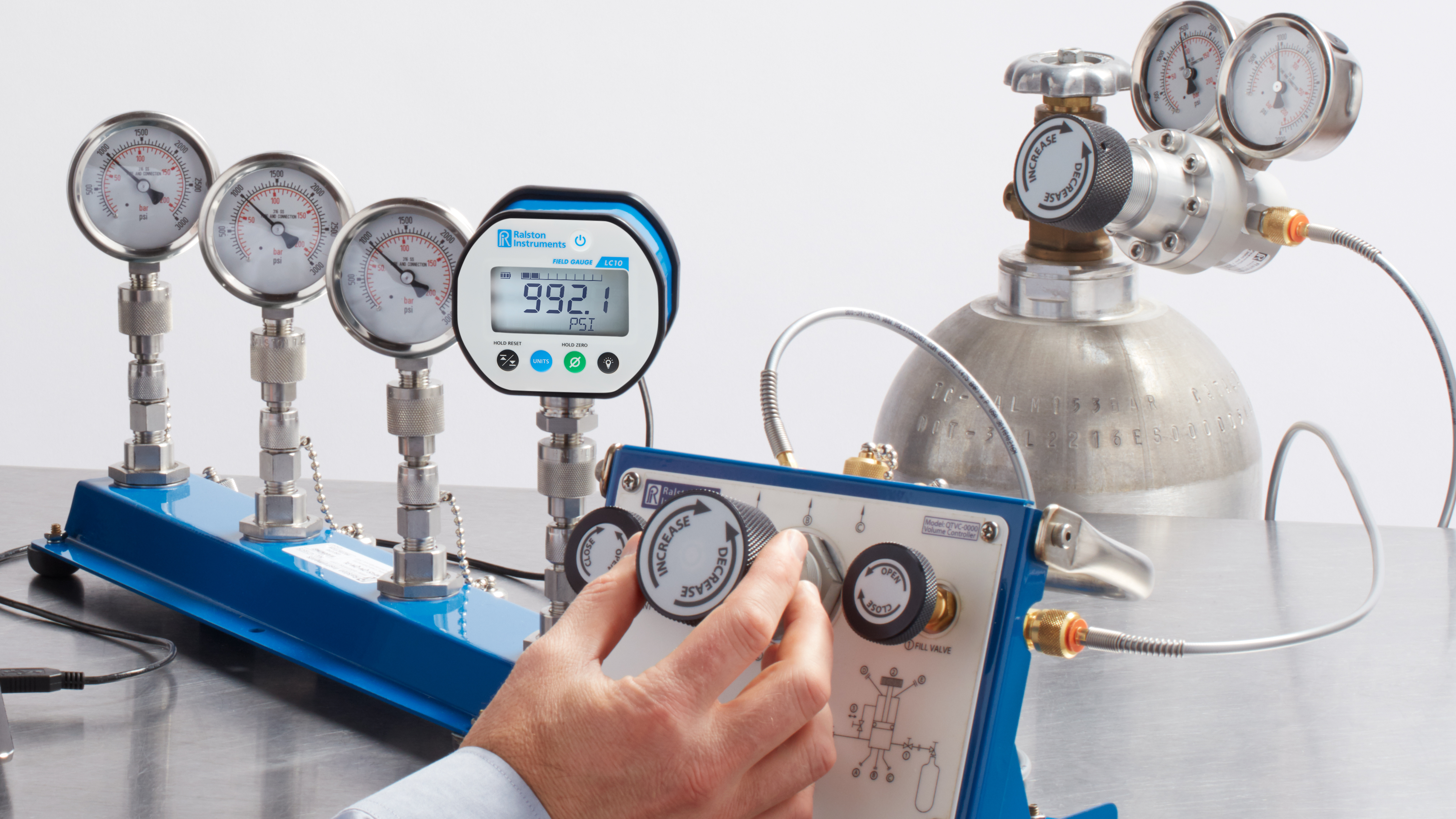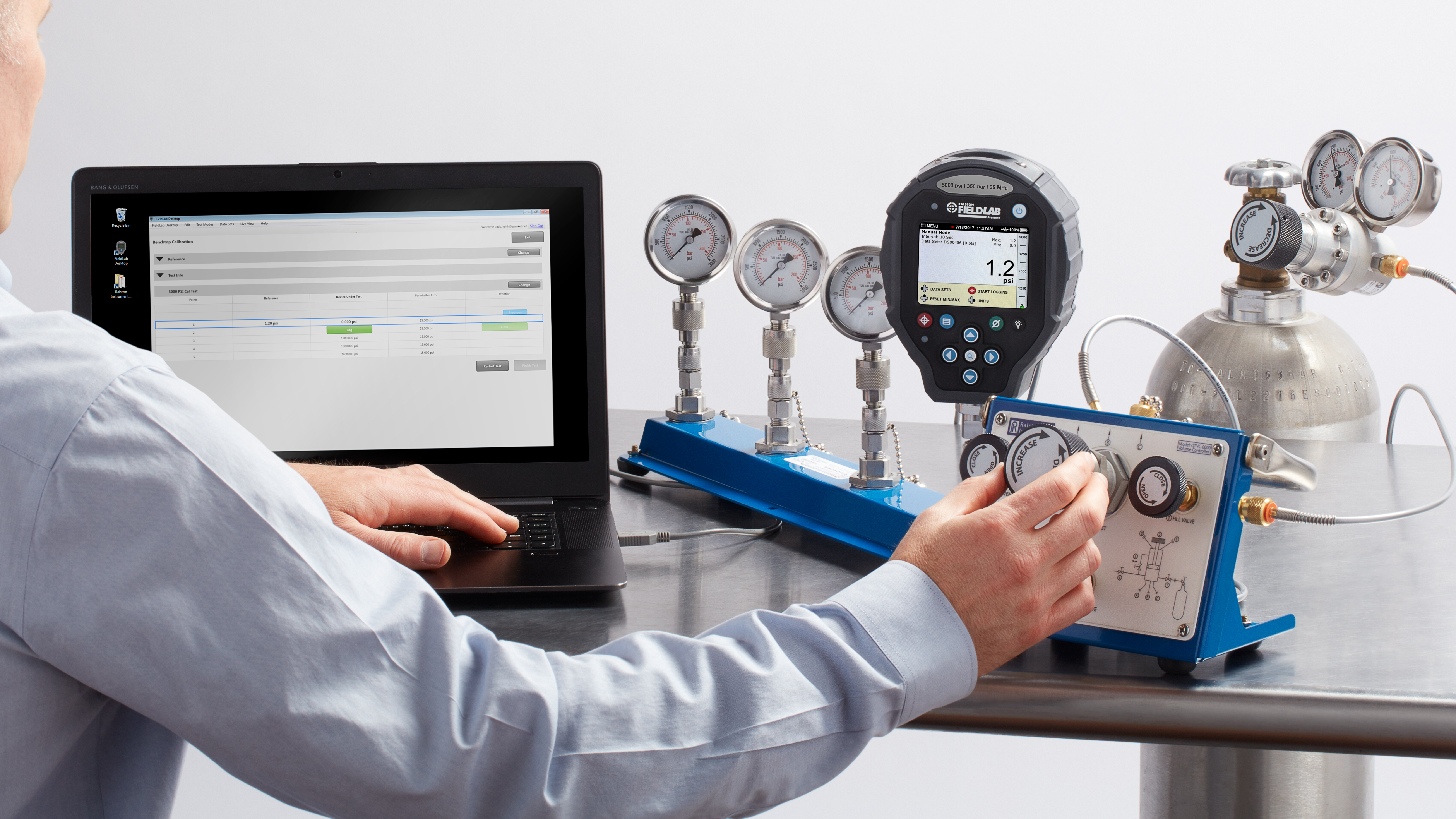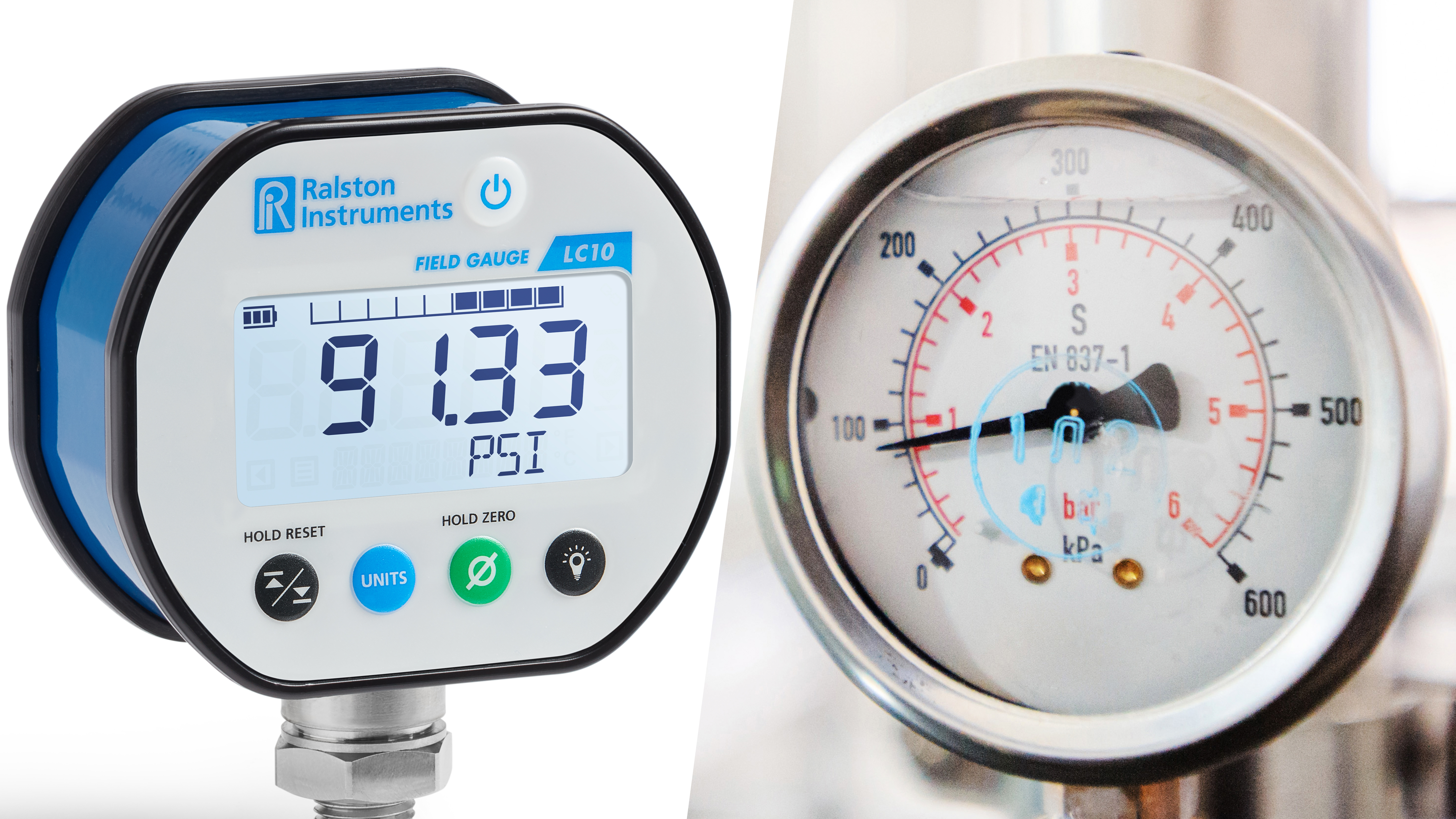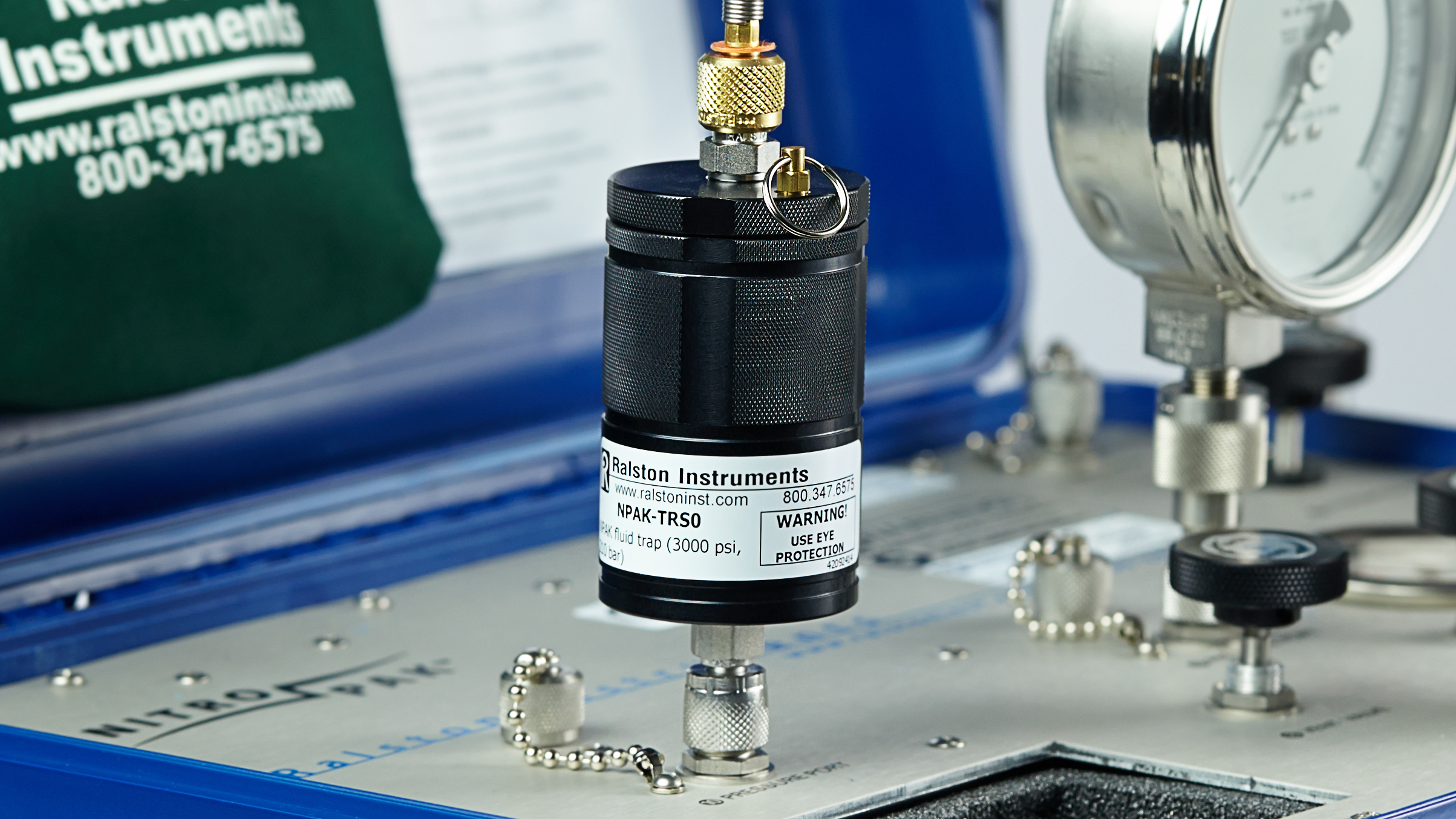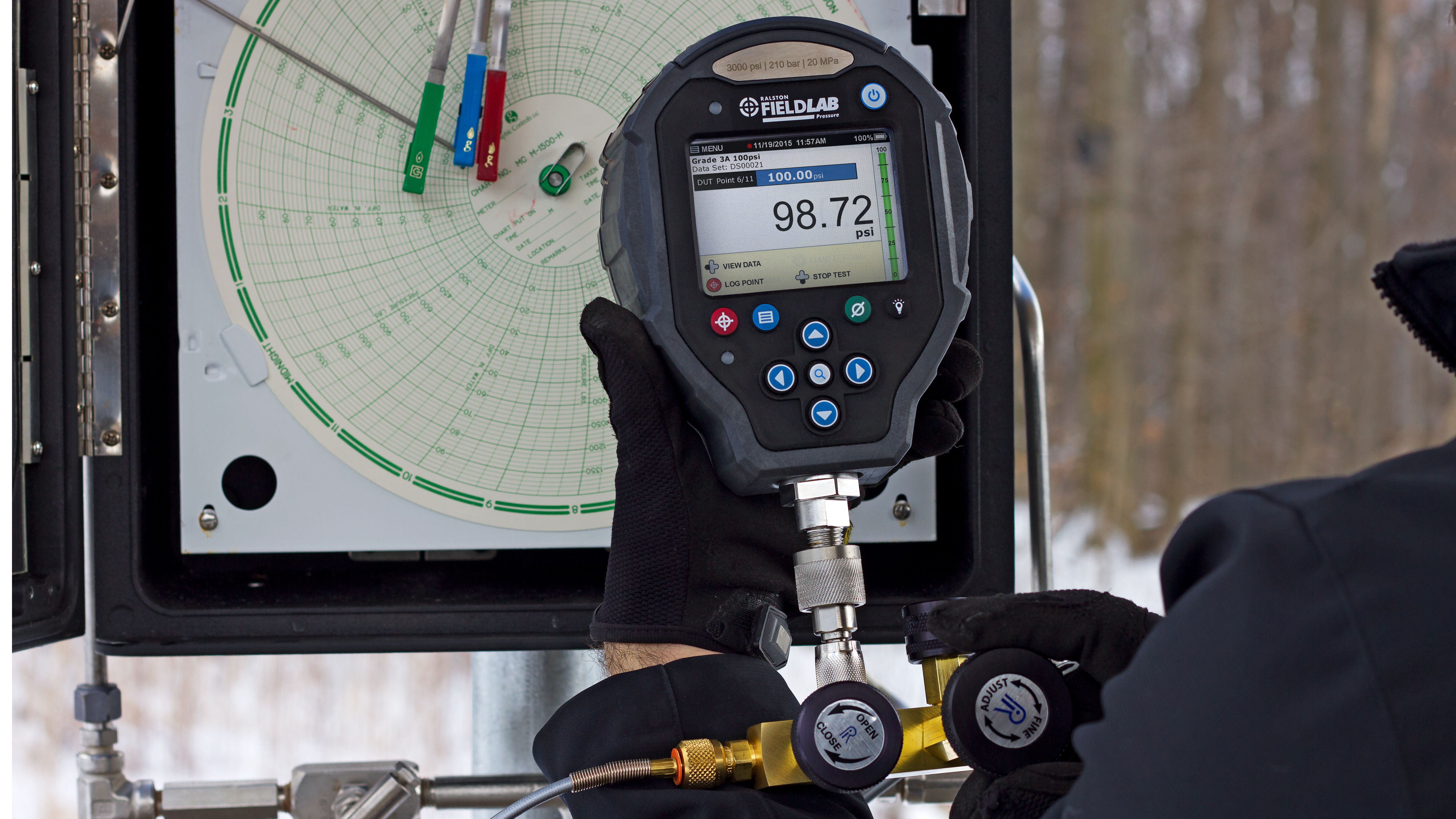Analog pressure gauges have a long history of providing quick, reliable pressure readings, but the popularity of digital gauges is on the rise. Here’s why.
A Brief Overview of Pressure Gauges
Put simply, a pressure gauge is a tool that provides the easiest, most direct way of measuring and displaying gas and liquid pressure. It’s one of the most commonly used pieces of equipment in refineries and electrical & industrial plants, with a wide range of applications in health care, energy production, and many other industries around the world.
Analog pressure gauges were first developed over 150 years ago when steam processes became common in factories during the Industrial Revolution. It’s difficult to grasp in today’s world of quickly changing technology, but from that point on, the basic mechanics behind analog gauges remained relatively unchanged until around the 1970s and 80s. As the world began to shift into the digital age, it was only a matter of time before the first digital pressure gauge was developed.
Since the 2000s, as new manufacturing techniques and technologies have been introduced, and more sophisticated materials of construction have become available, considerable improvements have been made to both. And while it’s safe to assume that analog gauges will be around for a long time, digital pressure gauges now offer many advantages over traditional analog gauges. This article focuses on the fundamental differences between the two and the numerous advantages of digital over analog pressure gauges.
Analog vs Digital Pressure Gauges: Pros and Cons
While analog and digital pressure gauges both fulfill the same functions, they use very different technologies and excel at different applications, and there are a few distinctive characteristics of digital gauges that really make them stand out over the standard analog technology of the industrial age.
Analog Pressure Gauges
Sometimes referred to as dial gauges, analog pressure gauges have a needle that directly responds to changes by pointing to numbers on a scale corresponding to the pressure sensed by the measuring element. Movement of the needle translates to variations in temperature or flow, which are easily noticed and monitored.
Pros: Analog pressure gauges are inexpensive and easy to use, and because they’re made of mechanical parts, they don’t require a power source.
Cons: Analog gauges are purely mechanical. They’re made of small gears and moving parts, so they’re much more likely to sustain damage from typical conditions in the field or in the lab. As a result, analog pressure gauges are especially prone to mechanical vibration, and in applications with constant pressure pulsation, the moving parts on analog gauges can wear out quickly, leading to inaccurate readings and potentially unsafe working conditions. They’re susceptible to overpressure, extreme temperatures, corrosion, clogging, vibration, and steam, so they require constant recalibration. Analog calibration requires disassembly and manipulation of adjustment screws, which can lead to user error.
Digital Pressure Gauges
Digital pressure gauges use pressure transducers to display pressure readings on a digital indicator. They provide fast results with clear readability, based on the settings the user inputs before taking the measurement. Digital gauges perform reliably and provide consistent readings, and are usually powered by battery, loop, or solar power.
Pros: There are several key characteristics that give digital gauges an edge over their analog counterparts.
- Durability - Digital pressure gauges are capable of performing without failure in extreme temperatures, hazardous conditions, and areas subjected to heavy mechanical vibration. Designed to withstand abuse and cracking, they’re typically made from aluminum or stainless steel with thick, crack-resistant plastic faces to protect them from shocks, drops, flying debris, and hazardous chemicals. As a result, they are far more durable and resistant to vibration and overpressure spikes than analog gauges.
- Calibration - A calibrated digital pressure gauge stays calibrated much more reliably than a pressure gauge with analog output. Digital calibration is done using software, so it’s much more precise.
- Customization Options - Digital pressure gauges can be customized to suit your application - you can add and remove features and change engineering units. Some digital gauges have the ability to create custom units that allow pressure to be displayed in torque or force units or when a custom application requires it. This is nearly impossible with analog gauges - the entire dial would have to be changed to switch units. Many digital gauges also automatically record high and low readings so this critical info can be referenced quickly - usually at the push of a button. Analog gauges need follower pointers which are a bit of a hassle to set and aren’t very accurate. And a huge advantage of digital is in data collection. Digital hydraulic gauges include outputs for sending results to a computer, data logger, or other instrument for data or analysis.
- Readability - Digital pressure gauges feature a clear readout on a large, easy-to-read display. Most include a bright backlight as well. Taking readings from an analog gauge always requires interpretation of the location of the needle. In some applications, where readings need to be taken from a distance, or several pressure readings need to be measured at once, analog is often preferred because of the quick, at-a-glance nature of visualizing the needle on the dial. But analog gauges are often misread due to parallax error, where the dial appears to be in different positions based on the angle of the person interpreting the data.
Cons: Keep in mind that a digital pressure gauge will always require a power source, so If your application requires a very infrequent use of a pressure gauge, it might not be the ideal choice. Batteries don't last forever, especially when they’ve been sitting on a shelf for months. It’s also important to recognize that digital gauges require special certifications that are mandatory in some industries (typically when used in hazardous locations) and a best practice in others. Analog gauges do not require certifications.
No discussion of the comparison between analog and digital pressure gauges would be complete with considering the cost. Because digital gauges use microprocessors and sophisticated equipment, they are more expensive up front. However, analog gauges often fail - they’re not as reliable, and they need to be recalibrated and replaced much more often so what you save in price initially might end up costing you more in the long run.
Which Type of Pressure Gauge is Best for You?
Ultimately, the choice of which type of gauge to use will always come down to the requirements of your specific application. There will probably always be a place for analog pressure gauges, but if you rely on pressure measurement to do your job, there’s a good chance your pressure gauge is ready for a digital upgrade. At Ralston Instruments, we can help you take that step.
Ralston Digital Pressure Gauges
Ralston Instruments is proud to offer the Field Gauge LC10. Specifically designed with the user in mind, the LC10 is compact, durable, easy to read, easy to use, and includes numerous customization options to help you get your job done faster and easier than ever. Available in a broad selection of pressure ranges, the digital Field Gauge LC10 is the ideal choice for a wide variety of industries and applications. Learn more.




